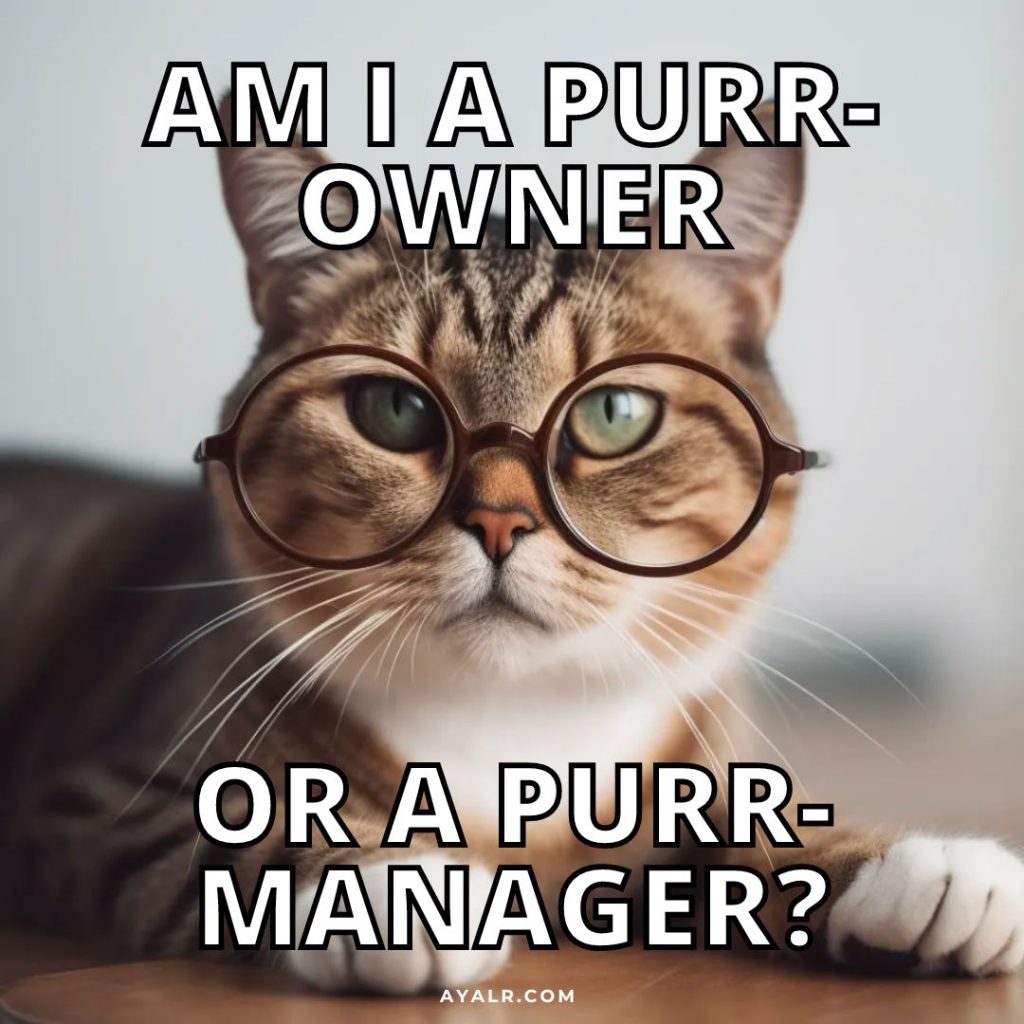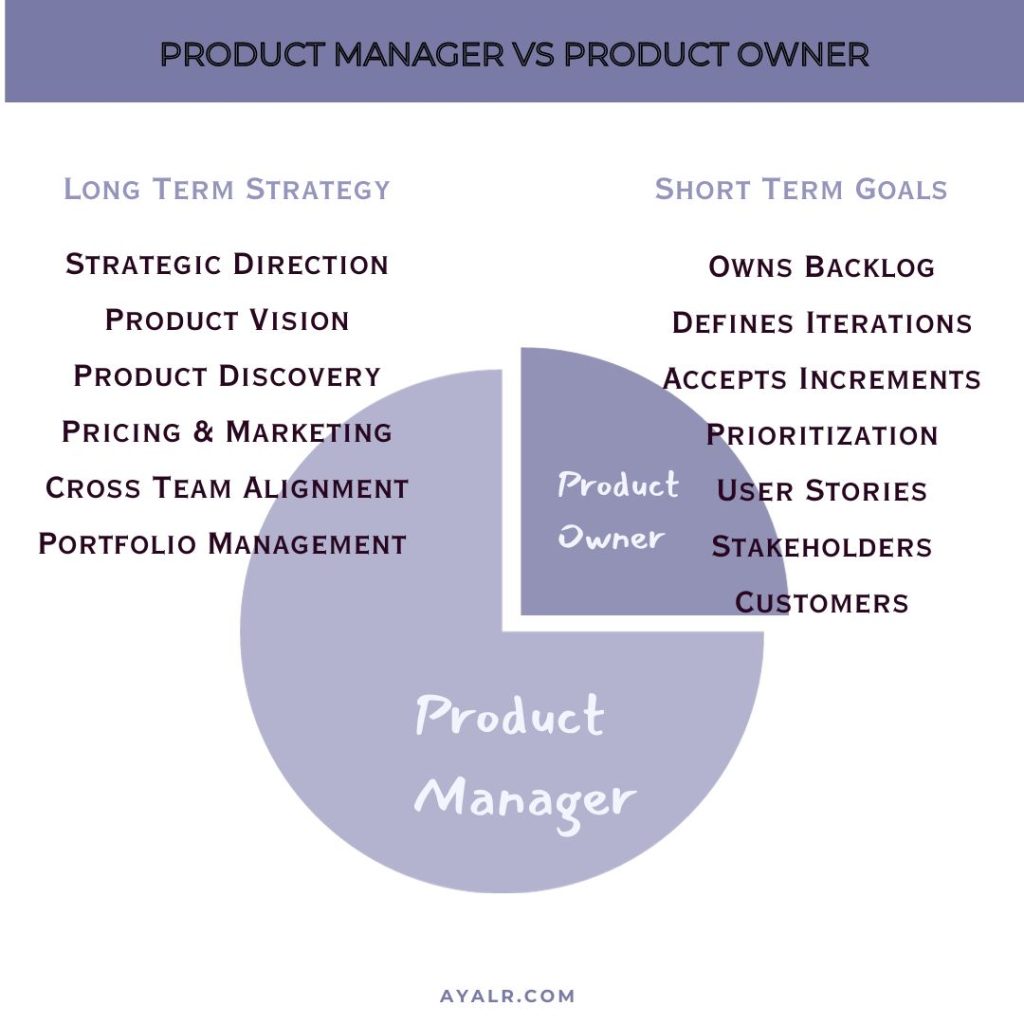The world of software development is a dynamic and evolving landscape where the success of a product depends on effective leadership and management. In this realm, two crucial roles often come into focus: the Product Manager and the Product Owner. While they may sound similar, they serve distinct purposes in the development process, each contributing significantly to a product’s success. In this article, we’ll delve into the roles of Product Managers and Product Owners, exploring their differences, similarities, and the critical relationships they hold in the software industry.

“A Product Manager often holds a higher position in the organizational structure. However, the roles differ significantly in their focus and responsibilities.”
RELATED:
The Role of a Product Manager
At the core of any successful product, there’s a Product Manager who steers the ship. These professionals bear the responsibility of defining the product vision, strategy, and its overall success. Their role transcends that of the Product Owner, extending to a broader perspective, where they need to take into account the market, competition, and the long-term business objectives.
Let’s break down one by one the common responsibilities of a Product Manager:
- Strategic Direction: Product Managers are responsible for aligning the product with the overall strategic goals of the company. They need to have a deep understanding of the market, industry trends, and the competitive landscape to inform the strategic direction of the product.
- Product Vision: Product Managers create and communicate a compelling product vision. This involves defining where the product is headed in the long term and how it will fulfill the needs of its users or customers.
- Product Discovery: Product Managers are often involved in the discovery phase, which includes researching and understanding customer needs, market trends, and potential opportunities. This information is crucial for making informed decisions about what features or improvements to prioritize.
- Pricing & Marketing: Product Managers play a role in determining the pricing strategy for the product and developing marketing plans to promote and sell it. This involves understanding the value proposition of the product and how it fits into the market.
- Cross Team Alignment: Product Managers need to collaborate with various teams within the organization, including development, marketing, sales, and customer support. Ensuring alignment and effective communication between these teams is crucial for successful product development and delivery.
- Portfolio Management: In larger organizations with multiple products or a product portfolio, Product Managers may be involved in managing the overall portfolio. This includes prioritizing investments, balancing resources, and ensuring that the portfolio aligns with the company’s strategic objectives.
In a nutshell, the Product Manager is the one who defines what will be built and why it should be built. They are the visionaries who keep the team aligned with the product’s goals. Moreover, they act as the bridge between stakeholders, team members, and customers. Their deep understanding of customer needs and market trends helps them prioritize features, set product strategy, and define the roadmap.
While there can be some overlap in responsibilities between Product Managers and Product Owners, the former often focuses on the broader strategic aspects of the product, market, and business, while the latter tends to be more involved in the day-to-day aspects of product development, iteration planning, and team collaboration.
The Role of a Product Owner

Product Owners, on the flip side, operate at a more detailed level, overseeing the day-to-day development process. Their main responsibilities include managing the backlog, planning sprints, and closely collaborating with the development team to ensure the efficient creation and delivery of the right features.
Now, let’s break down the common responsibilities of Product Owners within the context of Agile and Scrum methodologies:
- Backlog Ownership: The Product Owner is accountable for maintaining and owning the product backlog, a prioritized list of features, enhancements, and fixes requiring attention in the product.
- Iteration Definition: Playing a pivotal role in defining the content and priorities of each iteration or sprint, the Product Owner collaborates with the development team to plan the features and tasks to be addressed in each iteration.
- Increment Acceptance: At the conclusion of each iteration or sprint, the development team presents a potentially shippable product increment. The Product Owner is tasked with reviewing and accepting this increment, ensuring alignment with acceptance criteria and fulfillment of business requirements.
- Prioritization: A key responsibility involves prioritizing items in the product backlog by assessing their value and determining the order in which the development team should address them.
- User Stories: Typically engaged in creating and refining user stories—concise descriptions of a feature or functionality from an end user’s perspective—the Product Owner aids in communicating the product requirements in a way that is easy to understand.
A Product Owner’s role is crucial in Agile methodologies, where they play a hands-on part in defining user stories, setting priorities, and maintaining a well-groomed backlog. They work in close collaboration with the Scrum Master and the development team to ensure the product increments meet the defined criteria and that customer needs are met.
In addition to these tasks, the Product Owner often acts as a bridge between stakeholders (such as customers, business leaders, and users) and the development team. They are responsible for ensuring that the development team is working on the highest-priority items that align with the overall business goals and objectives.
What is the difference between a Product Owner and a Product Manager?

A Product Manager takes a broader approach, dealing with product strategy, market analysis, and aligning the product with the overall business objectives. They typically interact with stakeholders and customers at a higher level, seeking to understand their needs and prioritize features accordingly.
In contrast, a Product Owner focuses on the day-to-day development process. They work closely with the development team to ensure that user stories are well-defined, sprint goals are met, and that the product backlog is effectively managed. The Product Owner is more hands-on in terms of execution.
While Product Managers and Product Owners may have different responsibilities, it’s important to emphasize that these roles are complementary, not in competition. The relationship between Product Managers and Product Owners is built on collaboration and synergy. They must work together seamlessly to ensure that the product is not only strategically sound but also well-executed.
In many organizations, Product Owners do not report directly to Product Managers. Instead, they work alongside them, sharing responsibilities and collaborating on different aspects of the product. The goal is to ensure that the product is well-rounded, both in terms of vision and execution.
How PO & PM work together on a product?
The Product Lifecycle
The roles of Product Managers and Product Owners also differ throughout the product lifecycle. Product Managers are heavily involved in the initial stages, defining the product vision and strategy during the ideation phase. They set the product’s direction, considering market trends and customer needs. As the product progresses, Product Managers remain involved, overseeing the strategy and making adjustments as necessary.
Product Owners become increasingly active as the product moves into development. They focus on defining user stories, managing the backlog, and working closely with the development team during sprints. While Product Managers have a long-term vision, Product Owners focus on the short-term, ensuring that the product is built effectively and aligning with the immediate goals.

Let’s look at how both Product Managers and Product Owners work together and contribute to the success of a product.
- Mobile App Example: Imagine a company wants to launch a successful fitness tracking app. The Product Manager can be instrumental in defining the app’s vision, identifying the target audience, and creating a roadmap for its development. The Product Owner will need to work closely with the development team to prioritize features, manage the backlog, and ensure the app’s daily development goals were met. Together, they delivered a fitness app that not only aligned with the company’s business objectives but also met the needs of health-conscious users.
- E-commerce Platform Example: For an e-commerce platform, the Product Manager is responsible for defining the platform’s long-term strategy and include responsibilities like conducting market research, identifying key trends, and set the direction for the platform’s growth. The Product Owner, in this case, manages the day-to-day development process. They collaborated with the development team to define user stories, prioritize features, and ensure that the platform’s functionality aligned with the business goals. The collaboration between the Product Manager and Product Owner results in a successful e-commerce platform that meets customer needs and aligned with the company’s strategic vision.
Collaboration and Communication
The success of a product often hinges on the collaboration and communication between Product Managers and Product Owners. Both roles need to work closely and communicate effectively to ensure the product’s success. Here are some key aspects of collaboration and communication between these two roles:
- Alignment on Vision: Product Managers and Product Owners need to be on the same page when it comes to the product’s vision. The Product Manager sets the long-term strategy, and the Product Owner must understand and align the short-term goals with that vision. Regular discussions and meetings can help in achieving this alignment.
- Stakeholder Collaboration: Both roles interact with stakeholders, but at different levels. Product Managers often engage with high-level stakeholders, such as executives and business leaders, to understand their strategic goals. Product Owners, on the other hand, collaborate more with the development team and sometimes end-users. Effective communication between the two roles is essential to ensure that stakeholder input is considered at all levels.
- Prioritization: Collaboration on feature prioritization is critical. Product Managers provide the broader context and business goals, while Product Owners understand the technical and development aspects. They need to work together to decide which features should take precedence and ensure that the backlog reflects these priorities.
- Roadmap Development: Product Managers are responsible for creating the product roadmap. They should regularly involve Product Owners in this process to make sure the roadmap is both strategic and feasible. Product Owners can provide valuable insights into what can realistically be accomplished within the development team’s capacity.
- Feedback Loop: A continuous feedback loop is essential for iterative product development. Product Owners should relay feedback from the development team and end-users back to the Product Manager. This feedback helps the Product Manager make necessary adjustments to the product strategy.
- Sprint Planning: Effective collaboration is crucial during sprint planning meetings. Product Owners present user stories and work closely with the development team to ensure they have a clear understanding of the requirements and objectives.
- Problem Solving: When issues or challenges arise during development, Product Managers and Product Owners should collaborate to find solutions. This may involve adjusting the product strategy, re-prioritizing features, or exploring new opportunities.
- Transparency: Open and transparent communication is key. Both Product Managers and Product Owners should share insights, data, and information that can inform decision-making. Transparency helps build trust and ensures that both roles are well-informed.
- Adaptation to Change: The software industry is dynamic, and changes in the market or technology landscape can impact the product. Product Managers and Product Owners must be adaptable and open to making adjustments when necessary. This requires continuous communication and collaboration.
Challenges for Product Managers and Product Owners
Despite the crucial roles played by Product Managers and Product Owners, there are challenges and misconceptions associated with these positions. Some of the common issues include:
- Role Overlap: In some organizations, there may be confusion or overlap between the responsibilities of Product Managers and Product Owners. Clarifying the boundaries of each role is essential to avoid conflicts.
- Limited Resources: Both roles may face resource constraints, such as time and budget limitations. Managing expectations and making the most of available resources can be challenging.
- Balancing Short-Term and Long-Term Goals: Striking the right balance between short-term execution (Product Owner’s focus) and long-term strategic vision (Product Manager’s focus) can be a challenge.
- Stakeholder Management: Dealing with diverse stakeholders with varying expectations and priorities can be complex. Effective stakeholder management is a skill that both Product Managers and Product Owners need to develop.
- Technology Trends: Keeping up with rapid technological advancements and understanding their impact on the product can be challenging. Both roles need to stay informed and adaptable.
Conclusion
In conclusion, the success of a product depends on the harmonious collaboration between Product Managers and Product Owners. These roles are not in competition but rather complement each other. By working together effectively, they can ensure that the product aligns with the business’s long-term vision while meeting short-term development goals.
Key takeaways for creating successful products include:
- Clear Role Definitions: Ensure that the responsibilities of Product Managers and Product Owners are well-defined and understood throughout the organization.
- Effective Communication: Foster open and transparent communication between the two roles to maintain alignment and make data-driven decisions.
- Agile Adoption: Embrace Agile methodologies and principles to adapt to the fast-paced nature of the software industry.
- User-Centric Focus: Prioritize user needs and experiences in all product development efforts.
- Adaptation to Change: Be prepared to adapt to industry changes and evolving technologies.
Further Readings and Additional Resources
To delve deeper into the world of Product Management
Keywords: Product Manager, Product Owner, software industry, product development, Responsibilities of Product Manager, product vision, stakeholder collaboration, Backlog management, Agile methodologies, collaboration with the development team, Product Manager vs. Product Owner, reporting structure, Product lifecycle, ideation, product launch, Case studies, contributions of Product Managers and Product Owners, Senior role, leadership role, qualifications, Scrum Master, Agile framework, Collaboration, communication, collaborative practices, Challenges, misconceptions, overcoming challenges, Evolving roles, industry changes, technological advancements, Takeaways, successful products, Product Management, Product Ownership,
